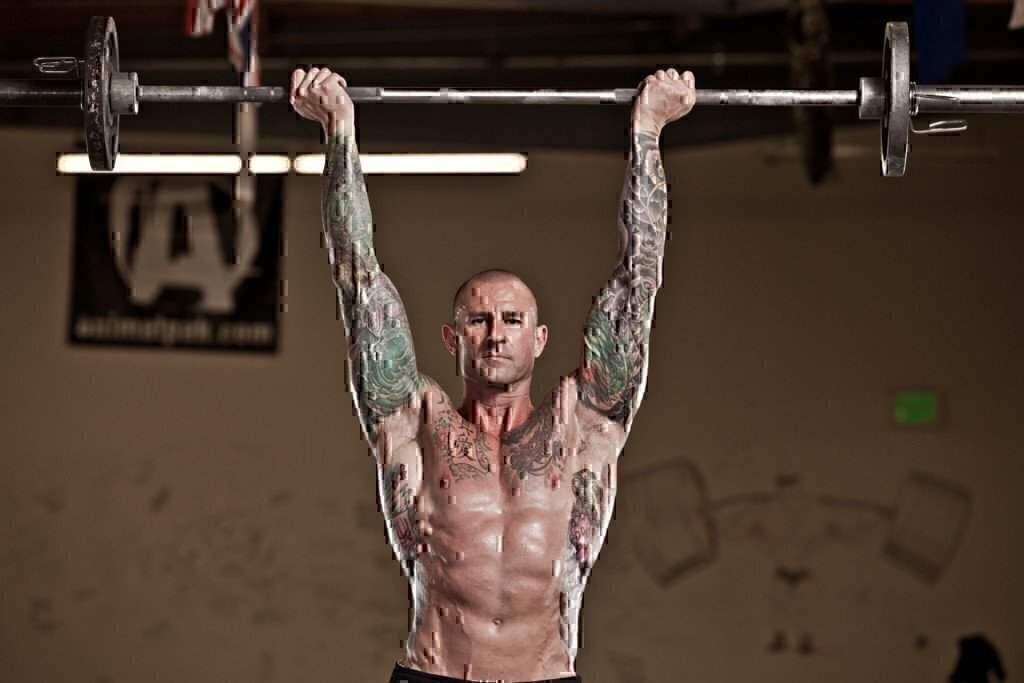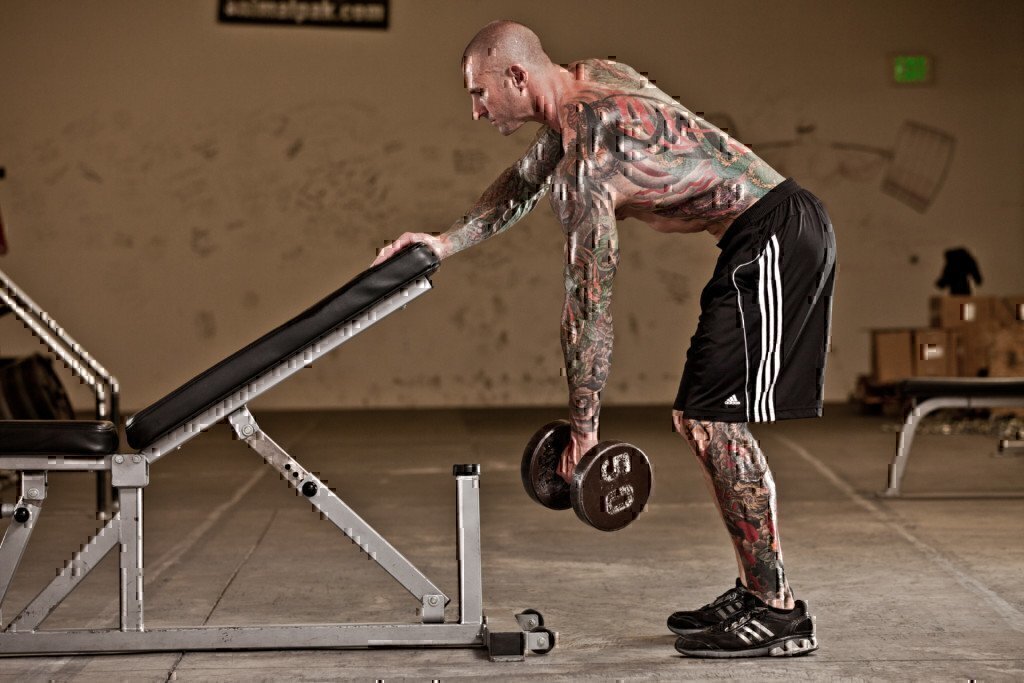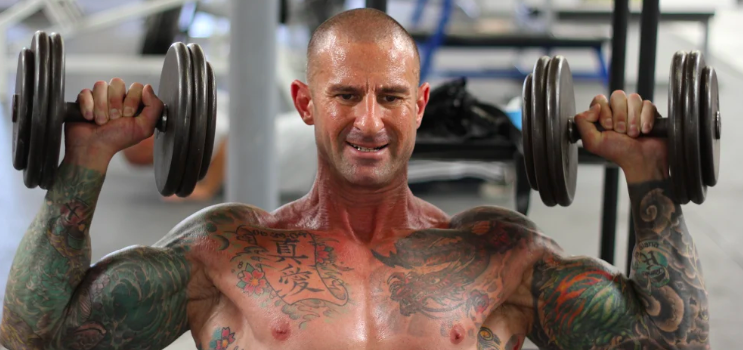SPONSORED
Fitness fads come and go, many of them appearing on late-night infomercials and employing unnecessary gadgetry. Think Tae Bo and the Shake Weight.
And then there are the training mainstays that never go out of fashion. Barbell exercises for maximizing strength and size. Dumbbell movements for ensuring muscular balance through from side to side. Cables for providing continuous tension and sparking muscle gains.
As specific training techniques go, one in particular stands out among them all, having withstood the test of time over a half-century after becoming popular: supersets. And it’s no wonder, as supersetting addresses pretty much every major fitness objective: size, strength, fat loss, training efficiency. If supersets aren’t a part of your current program, add them to your toolbox ASAP.
Defining the Superset
Documented over 50 years ago by the late fitness icon Joe Weider (my former boss, in fact), a superset is two exercises performed back-to-back with no rest in between exercises. For example, a set of dumbbell bench press followed immediately by a set of dumbbell rows. Only after the second exercise (dumbbell rows) do you take a rest.
Mr. Weider originally specified that it needed to involve opposing muscle groups to be a superset – chest and back, biceps and triceps, quads and hamstrings, etc. Technically speaking, if the two exercises trained the same muscle group (ie, two chest exercises or two leg exercises), it was a compound set. But these days, the definition is a bit looser; any time you pair two exercises, people call it a superset.

Notice I keep saying “two” exercises. If it’s three exercises involving the same muscle group performed consecutively without rest, it’s a tri-set; four or more, it’s a giant set. If the exercises train different muscle groups, that’s typically called a circuit.
My preferred way to use supersets is with opposing muscle groups. In my popular Super-Man series of training programs on JimStoppani.com (Super-Man, Super-Man 2, and Super-Man Remastered), every workout consists of nothing but supersets, and the vast majority of them pair either opposing muscle groups or exact opposite movements.
That said, there’s really no bad way to use supersets. Whether you pair opposing muscle groups, the same muscle group, upper and lower body exercises (ie, a superset pairing squats and pull-ups), or even random body parts (forearms with calves, shoulders with biceps), the benefits of supersetting are vast. Here are a few great reasons to use supersets regularly in your training…
Supersets Increase Intensity For Better Fat Loss and Muscle Building
High intensity is a hallmark of all of my training programs, and the simplest way to increase intensity is to decrease rest periods. With supersets, you’re doing just that. Think about it. With normal “straight sets,” you’d do a set of an exercise, rest, do another set, rest, and so on until all sets of that exercise are complete. Then, you’d move onto the next exercise in the workout. When supersetting, you instead alternate between the two exercises, resting only after the second exercise in each round of the superset. So essentially, you’re slashing your rest periods in half.
It’s a well-documented fact that higher intensity increases both calorie-burning and muscle-building, two factors that would seem to be at odds with each other. But they don’t have to be. You can build muscle and burn fat simultaneously, and supersets are one technique to help you do that. Look at competitive bodybuilders. Their primary two goals are to be as big as possible and also as lean as possible. And guess what? A vast majority of them use supersets regularly in their training. In fact, bodybuilders were the ones who popularized supersets, thanks to Joe Weider.
Supersets Save Time
As I just explained, every superset you do cuts down on rest time, as compared to traditional straight sets. And if most or all of your workout consists of supersets, imagine all the time you’re saving in the gym – while getting the same amount of work done. An hour-long workout with no supersets could be a 30-40-minute workout if you pair up exercises.
Most people I talk to love the thought of building more muscle and burning more fat with supersets, but EVERYONE loves saving time in the gym. A higher intensity workout is a more efficient workout. It just goes to show that you don’t need to spend all day in the gym to get fit. A vast majority of my workouts I do personally and publish on JimStoppani.com take less than 60 minutes to complete.
Supersets Help Build Strength
Supersets are popular among bodybuilders and other fitness enthusiasts, but they can be just as effective for those most concerned with maximizing muscle strength – ie, powerlifters and Olympic lifters.
Studies have shown that when supersetting opposing muscle groups, you’re likely to be stronger on the second exercise in the pairing than you would have been had you done that movement on its own. For example, if you do a back exercise, then immediately go to a chest move like bench press, you’ll be stronger on that bench press set than you’d normally be.
This may sound counterintuitive; you might think you’d be stronger on the first exercise, since you’re coming off a rest period. But science shows that you’re stronger on a given muscle group when you train its antagonist (opposing muscle) immediately beforehand. This is why you’ll sometimes see powerlifters pull hard on the barbell right before performing a max lift on bench press. That pulling action stimulates the opposing back and biceps muscles right before the chest, shoulders, and triceps have to push barbell up on the bench press.

Supersets In Action
Working supersets into your existing program can be as simple as looking at your existing workouts and pairing up exercises two at a time. As I said earlier, pairing opposing muscle groups works well, but don’t feel like you need to limit yourself to that.
Feel free to pair any lower body exercise with an upper body move if you’re doing a full-body workout. If you’re doing a body part split, supersetting exercises of the same muscle group (aka, a compound set) is fair game, too. For a more novel approach to supersetting, check out my brand-new full-body Super-Man Remastered program on JimStoppani.com.
[optional sidebar to supplement the piece]
4 Keys to Maximizing Supersets
1) Minimize Down Time Between Exercises. Within supersets, rest only as long as it takes you to move from one exercise to the next. Theoretically, you’re not resting at all between exercises, but in reality a few seconds will elapse between the end of one set and the beginning of the next. The key is to minimize that time.
2) Don’t Skimp on Rest Between Supersets. If you never rest during the workout, you won’t be able to lift as much weight, which can actually decrease the amount of work you do. To maintain adequate strength levels, rest at least 1 minute between each superset. That said, if you’re short on time in a given workout, feel free to drop rest periods to 30 seconds between supersets.
3) Do Bigger Exercises First in the Superset. If you’re supersetting exercises for the same muscle group (technically a compound set) and paring a compound exercise (ie, dumbbell presses) and an isolation exercise (flyes), do the compound move first. This will allow you to use maximum weight. Doing the isolation movement first is called pre-exhaustion – a worthy technique in its own right, but one that serves a slightly different purpose.
4) Alter the Order of Exercises. Especially when supersetting opposing muscles, alternate which exercise you do first. For example, in a biceps-triceps superset, don’t always do biceps first (or vice versa). Switch it up every other superset pairing, or every other workout, to promote balanced development among muscle groups
READ NEXT: UNDERSTANDING MACRONUTRIENTS 101










